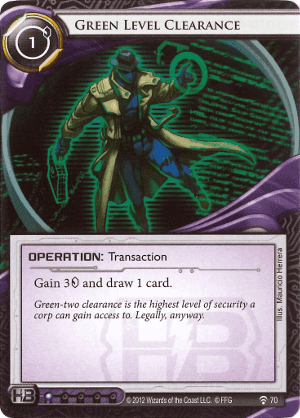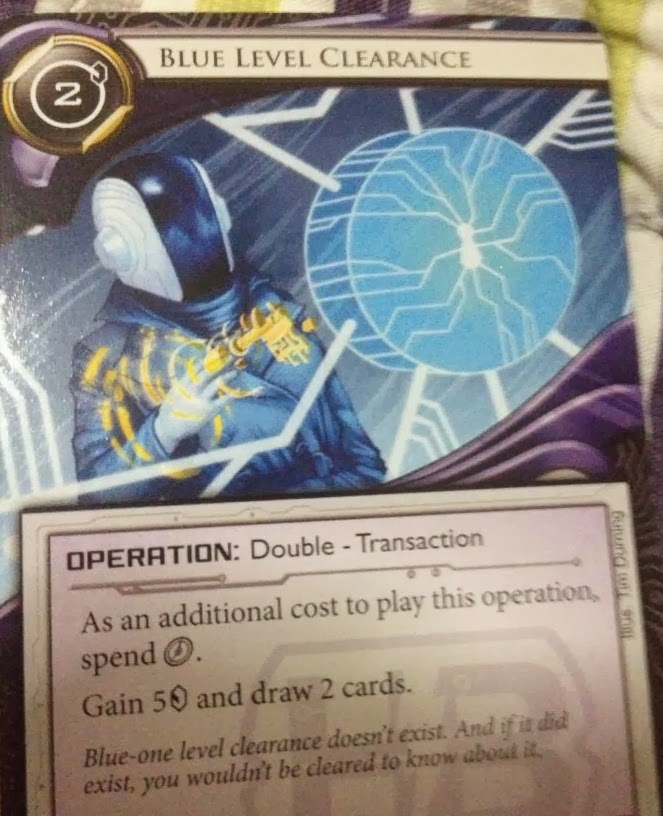Wenn wir eine Weile ANR gespielt haben kommen wir an einen Punkt, an dem unser Fortschritt nur noch sehr gering ist. Die Befähigung jedes Einzelnen ist natürlich unterschiedlich und von vielen Aspekten abhängig ist und zuzüglich auch noch von der Tagesform bestimmt wird.
Wir haben einige hundert Spiele gemacht und können von uns selber sagen, dass wir das Spiel grundlegend verstanden haben. Wir kennen die Karten, sicherlich nicht alle, auswendig, aber die meisten schon, wir kennen Spielarten und Statistiken und wir haben an einigen Turnieren teilgenommen und waren mehr oder minder erfolgreich ( Platz 1-8).
Was nun passiert ist etwas was ich gerne das unbewusste Plateau nennen möchte. Die Steigung unserer Lernkurve sinkt und wir nähern uns einer Plateauphase an. Die Kurvenform kann dabei als sigmoidal angesehen werden. Nach einer etwas zäheren Einstiegsphase gewinnt man schnell an Erfahrung und die eigenen Fähigkeiten verbessern sich rasant. Wieviele Spiele das konkret sind ist unerheblich. Letztendlich gelangt man aber an eine Plateauphase. Man verbessert sich nur noch sehr langsam und ist möglicherweise frustriert, weil man nicht so schnell besser wird wie zuvor. Gedanken beginnen sich zu manifestieren. Man beginnt zu zweifeln. Ist man ein guter Spieler, andere lernen viel besser, ich spiele doch so viel und beschäftige mich damit...
Wir gewinnen vielleicht noch mehr Spiele, aber wir kennen vielleicht Spieler gegen die wir maximal 50 % der Spiele gewinnen und uns fragen warum die eigene Gewinnrate nicht ansteigt.
Diese Plateuphase gibt es nahezu in allen Bereichen, sei es Sport, Lernen oder andere Fähigkeiten. Ich selber kenne das aus dem Kampfsport. Es kommt der Moment, an dem man das Gefühl hat nicht mehr so schnell voranzukommen. Jetzt beginnt aber die Phase, die eure Fähigkeiten langsam verbessert und zwar auf Detailniveau. Irgendwann ist das Ziel das sogennate Mushin, der Zustand des Nichtbewusstseins. Man erreicht einen Zustand, an dem man intuitiv reagiert und von Gefühlen nicht mehr so stark beeinflusst wird. Sicherlich ist dieser Begriff eher auf die Kampfkünste geprägt, aber ich persönlich denke, man kann ihn auch hier verwenden. Ihr werdet später automatisch Entscheidungen treffen, die richtig sind, basierend auf eurer Erfahrung und Kenntnis, die ihr euch über einen langen Zeitraum angeeigent habt. Das bedeuted nicht, dass ihr nicht mehr überlegt, aber viele Situationen bekommen einen individuelle Klarheit.
Wichtig ist beim Lernen die Frustration zur Seite zu schieben und die richtigen Fragen zu stellen bzw. auf die richtige Art und Weise zu spielen.
Wie kann man aber überhaupt beginnen effizienter zu spielen?
1. Die richtigen Fragen:
Ihr habt also ein deck gebaut und wollt es testen, es optimieren und eure Spielweise verbessern. Der erste Hinweis lautet, dass ihr ein deck nicht nur einmal spielen könnt, um zu entscheiden, ob ihr Karten rein oder rausnehmt. Spielt mindestens 4 Spiele und arbeitet euch langsam vor, ansonsten beeinflussen schlechter card draw, Glück oder Pech und Gegner zu sehr eure Entscheidung.
Zusätzlich stellt die richtigen Fragen an euch selbst:
---------------------
Warum habe ich gewonnen oder verloren?
Bin ich schnell genug an Schlüsselkarten gekommen und wenn nicht wie kann ich das vebessern (Tutor)?
Habe ich entscheidene Spielfehler gemacht, die für meinen Gegner vorteilhaft waren?
Warum ist der Runner nicht in meine Fallen gelaufen?
Hat mein Speicherplatz für all meine Programme gereicht oder kann ich das situationsabhängig gestalten?
War mein ICE ausreichend?
War meine economy ungenügend?
----------------------
Nur wenn ihr euch kritisch mit eurem Spiel auseinandersetzt könnt ihr euch verbessern. Je mehr ihr nur so vor euch hinspielt, umso mühevoller wird der ganze Weg. Das soll natürlich nicht bedeuten, dass ihr keinen Spaß haben sollt. Ganz im Gegenteil, es bleibt ja ein Spiel, aber ich denke man kann das kombinieren und sowohl Spielspaß haben, als auch die Spielpraxis verbessern.
Ihr werdet so schneller nachvollziehen können woran ihr gescheitert seid. Manchmal ist es auch einfach der card draw. Alle Arten von Kartenspielen haben einen unvermeidlichen Glücksanteil. Ihr verschiebt diesen Bereich natürlich zu euren Gunsten durch eure Deckgestaltung (mehr Kopien einer Karte, Tutorkarten etc.).
2. Die richtige Einstellung:
Seid keine schlechten Verlierer, aber auch keines schlechten Gewinner. Spielt gegen bessere Gegner anstatt nur gegen schlechtere. Wenn ihr verliert nehmt es hin und wenn ihr gewinnt dann prahlt nicht herum. Erklärt das Spiel interessierten Neulingen, spielt mit Freude und gebt euch gegenseitig Tipps, wenn ihr Fehler erkennt. Wenn ihr das macht kommt es auch positiv auf euch zurück.
Denkt an eure Freunde, helft ihnen bei Regelfragen und macht nicht blöde Sachen wie euren Spielpartner den einen Credit der Pad Campaign zu verweigern, wenn er das zu Beginn des Zuges vergessen haben solltet, erinnert ihn daran.
3. Spielsituationen:
Während des Spiels kommt man über kurz oder lang in die Situation in der man sich in einem Teufelskreis befindet. Diese Situation betrifft den Corp wie den Runner auf ähnliche Art und Weise. Als Runner sieht man eine Karte in einen Remote gespielt und fragt sich nun ob man diesen attackieren sollte oder nicht. Oft ist diese Entscheidung die schwerste, die man treffen muss.
Wenn ich der Runner bin laufen bei mir folgende Fragestellungen im Hintergrund ab:
----------------------
Denkt der Konzern wirklich, dass ich nicht zugreifen kann und wovon macht er das abhängig?
Sind diese Gründe mangelnde Credits, fehlende ICE Brecher oder anderes?
Was spielt der Konzern für eine Fraktion und kann ich den Spielstil bereits durchschauen (rush, fast advance, tag'n'bag, big ICE etc. )?
Welche potentiellen Fallen können mich in faction erwarten?
Welche Fallen könnten es sonst sein?
------------------------
Danach gehe ich ins Detail und wäge ab ob es wirklich eine Agenda ist oder ein Upgrade, Asset etc. Will der Konzern mich nur verleiten meine Credits für einen sinnlosen Run zu verplempern, bluffed er oder denkt er wirklich alles ist sicher?
Ihr müsst euch in seine Position versetzen und evaluieren was der Konzern sieht. Wenn ihr Anarchs spielt wird er vielleicht noch einen Stimhack einkalkulieren, wenn er nur ein ICE vor dem Remote habt denkt er dann an Inside Job?
Das Hauptproblem besteht nun daran in eine Situation zu kommen wo ihr denkt, dass er denkt, dass ihr denkt, dass er denkt und so weiter. Der Teufelskreis ist da und ihr müsst euch entscheiden wie ihr am besten vorgeht.
Ich muss zugeben, dass ich eher in solche Überlegungen komme, wenn mein Gegner ein erfahrener Spieler ist. Man weiß das der Gegenüber weniger Fehler begeht. Wenn er aber sehen müsste, das ich durch diesen Server komme, vielleicht auch nur unter großen Anstrengungen, warum sollte er dann eine Agenda spielen? Will er vielleicht danach ein Midseason spielen, weil er sieht, dass ich wenige Credits habe oder will er mich durch Punitive Counterstrike erwischen?
Es ist selten möglich dieses Spielchen absolut zu durchschauen und ich habe auch schon oft die falschen Entscheidungen getroffen.
Es gibt aber ein paar Wege und Szenarien die Möglichkeiten einzugrenzen:
1. Wieviel ungerezztes ICE liegt vor dem Server und kann der Konzern höchstwahrscheinlich alles rezzen? Liegt vor den zentralen Servern ebenfalls ungerezztes ICE? Dann solltet ihr euch überlegen, wenn ihr wirklich befürchtet, dass der Konzern eine Falle gespielt hat, auf das R&D zu rennen. Rezzt er das ICE?
Vielleicht ist seine Sorge dann größer, dass ihr im R&D etwas findet, auch wenn er möglicherweise nicht mehr genug Geld für das ICE vor seiner Falle zur Verfügung hat. Rezzt er es nicht möchte er vielleicht genug Credits haben, um seine Agenda vor Verlust zu schützen. Das erhöht die Wahrscheinlichkeit auf eine Agenda.
2. Habt ihr eine Fairie ausliegen, die euch vor dem ärgsten ICE schützen kann? Dann wird er vielleicht eher ETR ICE nutzen und ihr habt u.U. noch nicht alle Breaker ausliegen. Ihr seid aber abgesichert und könntet rennen. Manchmal wird das belohnt.
3. Wieviele advancement Tokens liegen auf der Karte? Die meisten üblen Fallen müssen entwickelt werden. Liegen da keine könnte es immer noch eine Snare sein oder ein Edge of the World. Ihr könnt es also riskieren zu laufen, wenn ihr genug Handkarten habt und auch noch clicks oder andere Möglichkeiten tags zu vermeiden.
4. Analysiert die Spielweise des Konzern in den vorangegangenen Zügen. Wenn der Konzern mehr Karten vom R&D gezogen hat, als ihr gesehen habt kann es gut sein, dass auch eine Agenda dabei ist. Insbesondere, wenn er ein ICE spielt und die Karte installiert will er schnell die Punkte scoren.
5. Der wichtigste Punkt: Seid aggressiv. Der Runner muss die Server angreifen. natürlich bringt es nichts einen Remote anzugreifen, der mich 20 Credits kostet und ich mich dann mehrere Runden erholen muss, dafür aber 6 x mal das R&D attackieren könnte. Aber spielt nicht vor euch hin, setzt den Konzern unter Druck, das ist essentiell und wird immer noch vernachlässigt.
Wenn ihr diese Fragen mit eurer Spielerfahrung in eine Gleichung steckt kommt da schon oftmals eine brauchbare Lösung an. Wenn ihr also einige Spiele gegen HB fast advance verloren habt, dann wisst ihr inzwischen warum und auch, welche Art von Karten oftmals gespielt werden. Assets sind weiterhin Jackson Howard, San San, Adonis (selten Eve) und manchmal eine Pad Campaign. Andere werden kaum eingesetzt, manchmal wird noch ein Ash gespielt, aber das war es auch schon. Selten bleiben die richtigen Agendas da liegen. Maximal am Anfang, wenn noch nicht so viel Credits da sind gleich ein San San (6 credits) zu rezzen und oder ein Biotic Labour zu spielen (4 Credits).
Um euch das zu demonstrieren: Ich hatte vor kurzem ein Spiel gegen Andromeda. Ich testete ein HB fast advance Deck und hatte in diesem Spiel kein (!) einziges ICE gerezzt, im mid game hatte ich eine Adonis, 2 x Eve Campaign und schwamm buchstäblich im Geld. Der Criminal Spieler hatte sogar die E3 Feedback implants draußen und ist kaum gerannt. Er hatte keine ICE Brecher, wäre aber durch die meisten Server so durchgekommen. Ich hatte zwar ein paar Hourglasses, Zeds und Ichis ausliegen und in meinen scoring remote einfaches ETR ICE, aber ich konnte so bequem einmal sogar mit San San, 2 x Biotic Labour 2 Agendas in einem Zug scoren. Hätte der Runner etwas aggressiver gespielt wäre das Spiel möglicherweise ganz anders ausgegangen.
Der selbe Spieler hat mich aber in seinem HB Deck gefoppt, indem er eine Karte installierte und einmal entwickelte. Im nächsten Zug hat er sie einfach liegen gelassen und nur ein weiteres Mal trotz ausreichender Credits entwickelt und ich habe die Karte als Falle abgeschrieben. Im anschließenden Zug hat er sie dann gescored (Project Wotan). Nun ja, das passiert zwischendurch, hat aber dazu beigetragen, dass ich ihn nicht mehr so leicht durchschauen konnte. Das Spiel verlief zwar nach Aufbau eines R&D locks und zwischenzeitlichen derezzen seines Wotans und Heimdalls zu meinem Gunsten, aber es blieb spannend.
Fazit:
Aller Überlegung zum Trotz bleibt es oft schwer die richtige Entscheidung zu treffen und mehr als einmal werdet ihr einfach rennen müssen. Das gilt insbesondere, wenn der Konzern sonst gewinnen würde. Manchmal kann man noch riskieren auf eine andere Agendaquelle (R&D, HQ) zu setzen, aber oftmals habe ich diese Möglichkeiten nicht.
Gerade, wenn meine Informationen eingeschränkt sind muss ich manchmal den Teufelskreis einfach brutal durchbrechen und mutig nach vorne stürmen.
Momentan haben leider eher die criminals die Möglichkeit sich z.B. mit einer überraschend gespielten Sneakdoor beta und folgendem Emergency Shutdown den Weg zu erleichtern, aber schauen wir mal was die zukünftigen Datapacks bringen. Ich sehe auch interessante Keyhole Noise Decks anrollen.
Android Netrunner hat eine starke Pokerkomponente und ihr werdet nicht immer in der Lage sein die Situation gänzlich einzuschätzen, aber wenn ihr meine vorangegangenen Artikel gelesen habt und euch somit etwas mehr mit Wahrscheinlichkeiten auskennt wird es euch immer besser möglich sein einzuschätzen ob da eine Agenda oder andere Karte liegt.
Keep running!
Bildquelle: http://fc07.deviantart.net/fs70/f/2013/130/2/4/2489de203122b7bcbf328445f44f767a-d64r4j8.jpg









